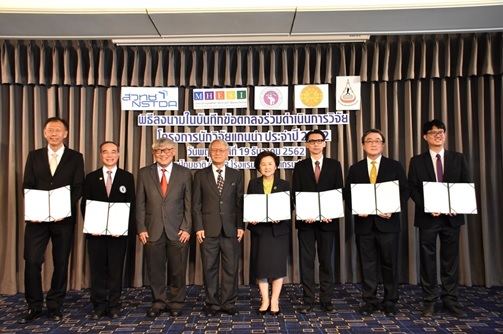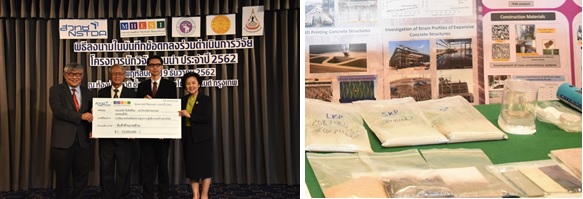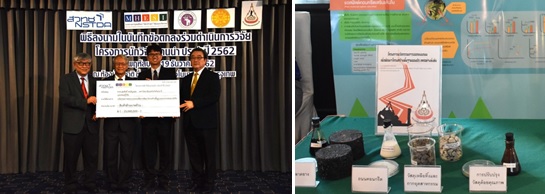Awardees to the NSTDA Research Chair Grant 2019 were announced at a ceremony, presided by Prof. Dr. Yongyuth Yuthavong, Former Deputy Prime Minister and currently Advisor to NSTDA President, held on 19 December 2019. Three university professors whose projects range from the development of novel therapeutic interventions, to sustainable construction and innovative road design, were among the recipients to this year’s prestigious awards. According to Prof. Dr. Prasit Palittapongarnpim, NSTDA Executive Vice President and secretary of the NSTDA Research Chair Grant Selection Committee, a total of 20 research proposals were received this year.

Professor Dr. Nipon Chattipakorn of Faculty of Medicine, Chiang Mai University is awarded a 20-million-THB grant to develop novel therapeutic interventions to prevent chemotherapy-induced cardiotoxicity and chemobrain. He aims to develop preventive strategies against cardiotoxicity and chemobrain - two major adverse effects of chemotherapeutic agents - by employing "cell-to-bedside" research approach involving the investigations at the cellular level, in animal models, and subsequently in breast cancer patients to ensure clinical applicability. Findings of this project will lead to an improvement of current medical guidelines for breast cancer treatment and, ultimately, to an improved quality of life of breast cancer patients.

A 15-million-THB grant is awarded to Prof. Dr. Somnuk Tangtermsirikul of Sirindhorn International Institute of Technology, Thammasat University to develop technologies and standards for sustainable practices in construction. His project aims to develop technologies and standards to address sustainability of concrete construction, which includes such issues as efficient use of resources, consideration of long service life, reducing environmental burdens and concerns of safety and health of workers. Comprehensive investigation will be made in 4 major areas covering all essential steps toward sustainable construction: 1) structural analysis and design; 2) materials for construction; 3) construction technologies and management; and 4) maintenance. As concrete construction in Thailand continues to grow as a result of expanding investment in public infrastructure projects, the development of practical research and industry standards based on this study will increase potential, strength, and competitiveness of Thai construction industry.

Prof. Dr. Suksun Horpibulsuk of Suranaree University of Technology receives a 15-million-THB fund for the project titled “Innovative Road Design for Sustainable Infrastructure Development”. In the study, he will introduce the Mechanistic-Empirical method to the road design. The Mechanistic-Empirical method uses the basic mechanics and theoretical modeling in the analysis of stress, strain and the deformation that occur in the road materials under the cyclic load of vehicle wheels. This method is far more effective than an Empirical method currently used in Thailand, with the following advantages: 1) the pavement structure can be designed using local natural materials, and alternative materials; 2) the method can be used with various wheel loads and traffic volumes; 3) the pavement structure can be designed in a variety of ways, helping engineers to choose the most suitable pavement structure; and 4) the method can accurately predict the damage to the road, therefore it is easy to define maintenance strategies. This research project will apply the available research on road engineering materials in Thailand to the real practice, and develop effective and international Mechanistic-Empirical design guidelines and standards, suitable for all materials, roadways and road types.

NSTDA Research Chair Grant Program was established in 2009, with an aim to support high-potential researchers with a large-scale research fund worth up to 20 million baht per grant. Since its inception, the program has awarded 18 researchers for 20 projects. Among these recipients, 11 researchers are in medical science field, 2 in food and agriculture, 2 in manufacturing and services, and 2 in energy and environment. These projects have resulted in numerous publications, prototypes, patents and graduate students.
